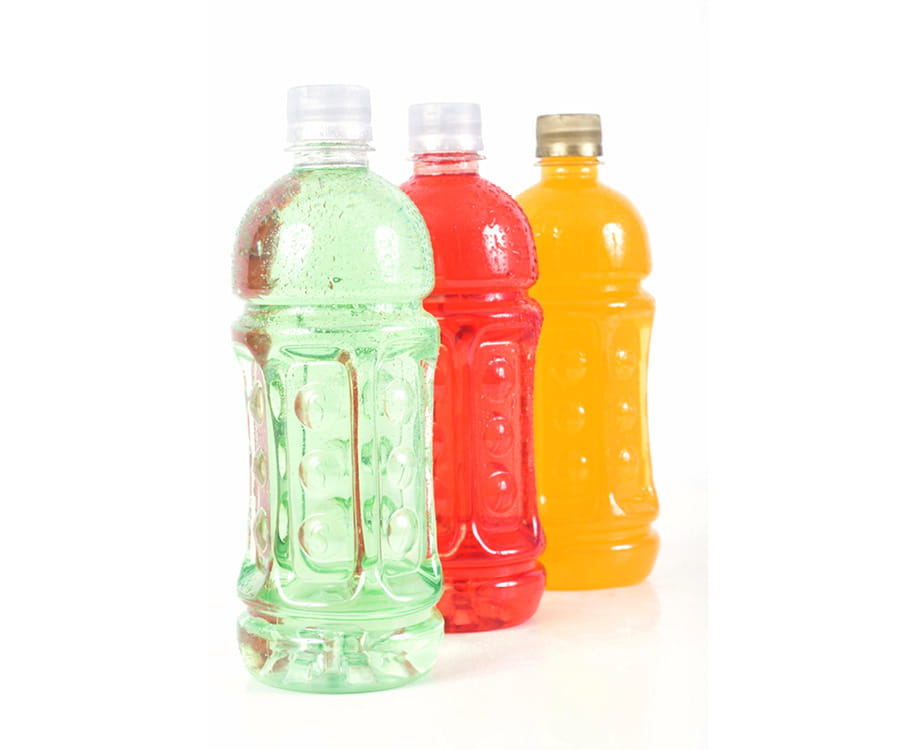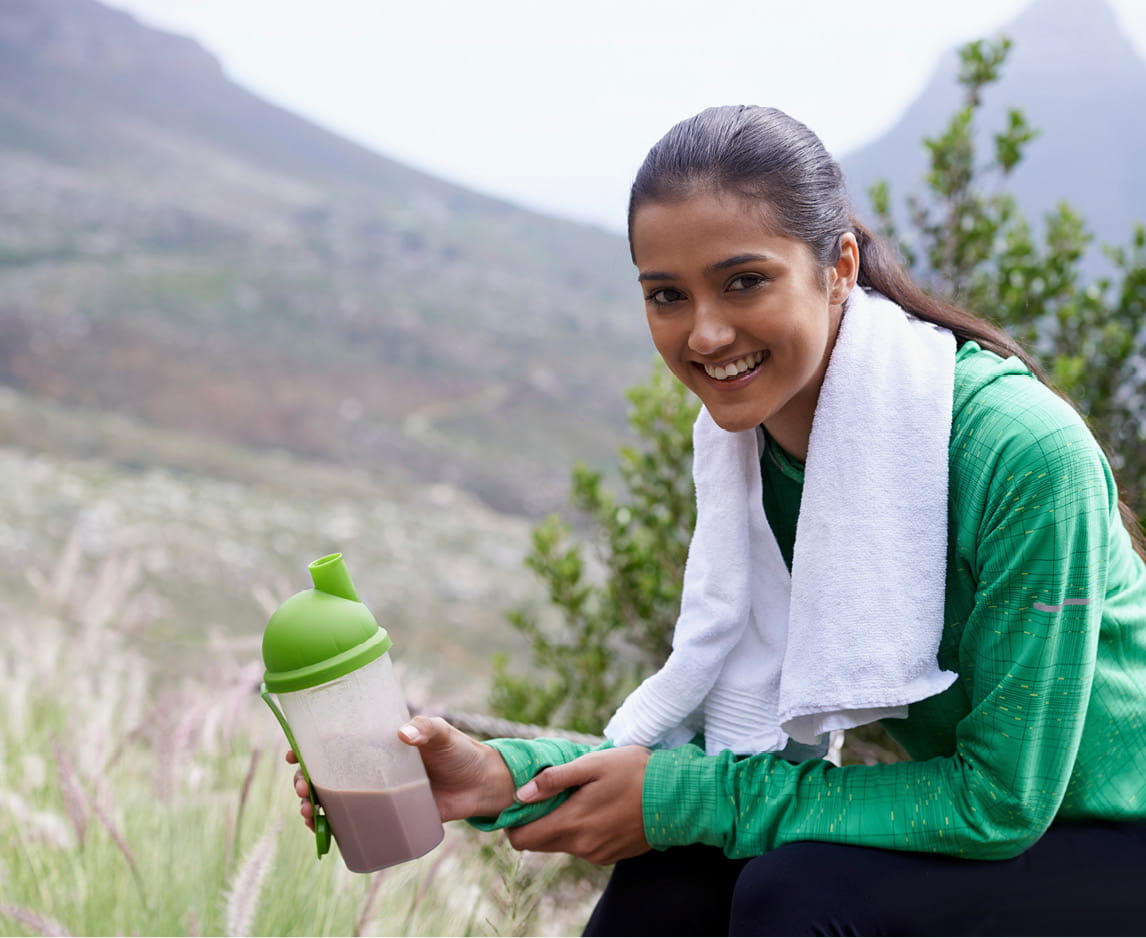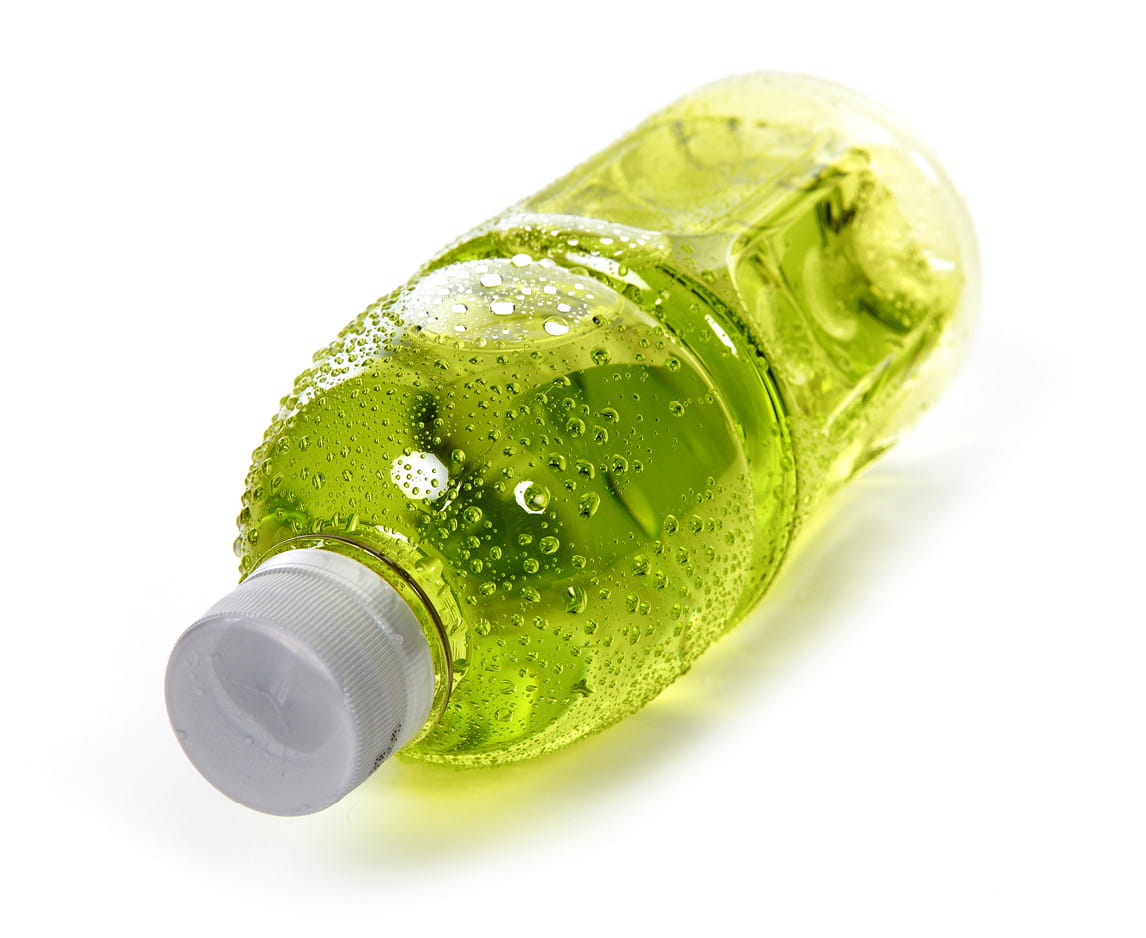Nutrition and Performance Beverages: Seeking a Healthy Boost for Stellar Performance
October 10, 2018
It’s somewhat ironic. Consumers’ health goals are getting in the way of nutrition and performance beverages’ well…performance. With a variety of cross-category options on the market, sales have leveled off. Whether they seek a post-workout refuel or a meal replacement to help manage their weight, consumers have a multitude of products to pick from and aren’t shy about shopping around. Let’s examine the nutrition and performance beverage category including the influence of women, the impact of clean, and the emergence of functionality. At the same time, we’ll review the challenges and opportunities facing the category and share new products and flavors winning over consumers.

Click Here for the full report!
Before we dive into market trends and projections, let’s define what we mean by nutrition and performance beverages. This category includes sports drinks, nutritional drinks, performance drinks and weight loss beverages. It also includes powdered beverages or mixes. For the performance portion, Mintel defines performance nutrition products as ones that “promote physical and mental performance for athletes. Their functional purposes are directed towards weight and muscle gain, increasing the metabolic rate and enhancing or boosting energy levels, accelerating the breakdown of protein to aid muscle growth, muscle repair and recovery.”
The nutrition and performance beverage market has experienced a plateau. Sales are largely driven by consumer interest in improved health and wellness, along with their trust in the economy. The market has been affected by competition from other categories like functional waters and energy-boosting RTD coffees and teas. As a result, 2017 reflected a leveling out in sales. The US leads the world with over a quarter of the launches for all food, beverage and vitamins/minerals/supplements performance nutrition products. The majority of performance nutrition products in the US were launched in the meal replacement (65%) and sports drink (15%) sub-categories.
Sports drinks represent 55% of the category’s dollar sales but have lost ground, down -3% from 2012-2017. However, nutritional drinks have seen an increase of the same amount in the same time period. That said, we can’t assume that consumers are substituting nutritional drinks for sports drinks like Gatorade especially since they don’t serve the exact same needs. What we can surmise is that sports drinks are losing steam to the expanding segment of functional waters and at the same time, more consumers are integrating nutritional drinks into their daily diets. The nutritional drink category, more than any other, has exploded especially with plant-based protein alternatives like pea or rice proteins.
38% of adults consume sports drinks primarily for hydration. However, most adults are turning to nutritional drinks for general health. Since these drinks (sports, nutrition, performance and weight loss) fulfill similar functions equally to many food and beverages, this category is going to have to work that much harder to establish its value to consumers.

The leveling out of the individual segment markets can be also attributed to the high sugar and artificial ingredients contained in for example, performance nutrition products. Nutrition and performance drinks should be the logical choice for consumers, but they are losing out to other beverage alternatives with similar functional claims with a cleaner, more appealing label. There is a slew of contenders like functional waters looking to fill the consumer’s cup.
Before we spend time understanding the consumer, let’s see what reasons they choose to use nutrition and performance beverages:
PERFORMANCE BEVERAGES: Snack, build muscle
WEIGHT LOSS: Meal replacement, weight loss
SPORTS DRINKS: Exercise recovery, vitamins/mineral replacement, 60% for thirst/hydration
NUTRITIONAL: General health, vitamins and minerals, meal replacement (women)
ENERGY: Treat, energy
Health and wellness is the driver for consumers purchasing nutrition and performance beverages. And they are a discerning bunch who have no problem studying labels for artificial ingredients, protein content and source, and grams of sugar contained.
• Taste is the #1 attribute for 69% of consumers.
• 43% concerned with the amount of sugar when making a purchase decision.
• Protein source is less important to consumers than price yet slightly more important than the presence of artificial ingredients.
• Protein is most important both in amount and the source for post-workout sports drinks.
While women consume less nutrition and performance beverages than men, a higher percentage of them are maintaining their usage and 25% admit to consuming more than they did a year before. The usage of the products by women could be attributed to several factors centered around marketing strategies, product development and ingredients., Manufacturers that create products with women in mind have much to gain especially if they create products that offer lower sugar, clean ingredient labels and overall health/natural formulations. These strategies will attract women who aren’t finding what they need in the category loaded with extreme protein and bro-heavy marketing.
Women and men certainly differ when it comes to nutrition and performance beverages, and also diverge when choosing their favorites. Artificial ingredients and high sugar are definite turnoffs for women as 37% believe the products contain too many artificial ingredients and 41% believe they are too high in sugar. The real key to capturing female consumers is the incorporation of clean ingredients and proven efficacy. In the meal replacement segment of nutrition and performance beverages, women are using them more than men to manage their weight (27%) or to entirely replace a meal (47%). As a result, products that piggyback satiety claims with meal replacement beverages would resonate strongly with this group.

Like most segments, nutrition and performance beverages have some pretty powerful market challenges to address. From sugar reduction to proven functionality to clean formulations, certain challenges give manufacturers ample opportunity to differentiate enough to entice purchase. Of course, there are products from other categories doing their best to prove that they already address these stumbling blocks, but consumers still seem committed to performance beverages.
The fact that 38% of performance beverage category users claim to be slowing down their consumption because they want to reduce the sugar in their diets should be worrisome for manufacturers. Some companies are responding with unique products that offer solutions for consumers.
35% of nutritional and performance drink users say protein level is an important purchase driver, compared to 32% who say protein source is most important. Millennials especially are drawn to plant proteins because of their ability to offer a clean label while consumers with certain allergies seek specific proteins. However, only 25% of consumers believe plant proteins are as effective as dairy while another 25% feel non-dairy is as effective.
However, Starbucks recent introduction of their Protein Blended Cold Brew combining a non-dairy protein of pea and rice powders with almond butter shows plant-based proteins are here—at least for a while.
There is some discussion about not all proteins being necessarily equal in the quality they deliver. This conversation about ranking protein may become the norm especially for plant or green proteins as they are missing important amino acids that animal proteins contain. The use of whey protein in performance beverages drastically fell from 63% in 2012 to 21% in 2013, while pea proteins grew 20% in the same time period, signifying that anything is possible when it comes to protein. Today’s love affair with ingredients like pea protein might be tomorrow’s whey protein concentrate.
Although there is some confusion with the definition of “clean,” consumers are enamored with “natural” when it comes to sports drinks. 41% of consumers do not use any nutrition or performance drinks whatsoever and it is speculated that it is because they contain artificial ingredients. Of those who do, 31% believe that the products contain too many artificial ingredients. It’s clear that formulating products to be as free from artificial ingredients as possible will attract current and possibly potential consumers. Brands that focus on “ditching artificial sports drinks” and choosing a more natural product are winning with consumers.
We’ve mentioned that there are products looking to challenge nutritional and performance beverages outside the category. Functional waters are a key challenger right now, targeting regular sports drink consumers because they offer the hydration that many consumers seek, with the benefit of low/no/reduced sugar. Functional beverages also might be the perfect solution when ordinary foods and beverages might present some challenges or conflict with other disease or health requirements, especially for Older Boomers.

Top Flavors in new U.S. launches, 2013-2018
Chocolate
Vanilla
Fruit & Punch
Berry
Milk Chocolate
Strawberry
Grape
Orange
Blue Raspberry
Lemon Lime
Cookies & Cream
Citrus
Watermelon
French Vanilla
Fruit
Lemon
Banana & Srawberry
Coffee
Top Growth Flavors in New U.S. Launches, 2013-2018
Vanilla
Milk Chocolate Strawberry
Lemon Lime
Cookies & Cream
Watermelon
Citrus
Mango & Orange
Punch
Banana
Raspberry
Peanut Butter
Cherry
Wildberry/Wild Fruit
Apple
Matcha/Maccha (Green Tea)
Honey & Oat & Strawberry
Mocha
Honey & Oat & French Vanilla
Sugar reduction. Clean consciousness. Importance of protein. Performance nutrition beverages are leading the way for other categories, and indicating the interests and drivers of consumers on the whole. The lines are becoming blurred across categories as different forms and format jockey for attention. Food and beverage creators must consider the goals of those consumers (health & longevity) and the opportunities in the space. As always, taste is of the utmost importance. Making a high-protein, low sugar beverage delicious is a recipe to winning over this segment.
Click Here for the full report!
What does true partnership look like? You deserve a flavor partner ready to turn these trends into the tangible.
Let FONA’s market insight and research experts get to work for you. Translate these trends into bold new ideas for your brand. Increase market share and get to your “what’s next.” Our technical flavor and product development experts are also at your service to help meet the labeling and flavor profile needs for your products to capitalize on this consumer trend. Let’s mesh the complexities of flavor with your brand development, technical requirements and regulatory needs to deliver a complete taste solution.
From concept to manufacturing, we’re here for you — every step of the way. Contact our sales service department at 630.578.8600 to request a flavor sample or chat us up at www.mccormickfona.com/contact-mccormick-flavor-solutions/
Sources in full report

Click Here for the full report!
THE DEFINITION
Before we dive into market trends and projections, let’s define what we mean by nutrition and performance beverages. This category includes sports drinks, nutritional drinks, performance drinks and weight loss beverages. It also includes powdered beverages or mixes. For the performance portion, Mintel defines performance nutrition products as ones that “promote physical and mental performance for athletes. Their functional purposes are directed towards weight and muscle gain, increasing the metabolic rate and enhancing or boosting energy levels, accelerating the breakdown of protein to aid muscle growth, muscle repair and recovery.”
THE MARKET
The nutrition and performance beverage market has experienced a plateau. Sales are largely driven by consumer interest in improved health and wellness, along with their trust in the economy. The market has been affected by competition from other categories like functional waters and energy-boosting RTD coffees and teas. As a result, 2017 reflected a leveling out in sales. The US leads the world with over a quarter of the launches for all food, beverage and vitamins/minerals/supplements performance nutrition products. The majority of performance nutrition products in the US were launched in the meal replacement (65%) and sports drink (15%) sub-categories.
Sports drinks losing ground to functional waters
Sports drinks represent 55% of the category’s dollar sales but have lost ground, down -3% from 2012-2017. However, nutritional drinks have seen an increase of the same amount in the same time period. That said, we can’t assume that consumers are substituting nutritional drinks for sports drinks like Gatorade especially since they don’t serve the exact same needs. What we can surmise is that sports drinks are losing steam to the expanding segment of functional waters and at the same time, more consumers are integrating nutritional drinks into their daily diets. The nutritional drink category, more than any other, has exploded especially with plant-based protein alternatives like pea or rice proteins.
38% of adults consume sports drinks primarily for hydration. However, most adults are turning to nutritional drinks for general health. Since these drinks (sports, nutrition, performance and weight loss) fulfill similar functions equally to many food and beverages, this category is going to have to work that much harder to establish its value to consumers.

Clean Label & Sugar Playing a Role
The leveling out of the individual segment markets can be also attributed to the high sugar and artificial ingredients contained in for example, performance nutrition products. Nutrition and performance drinks should be the logical choice for consumers, but they are losing out to other beverage alternatives with similar functional claims with a cleaner, more appealing label. There is a slew of contenders like functional waters looking to fill the consumer’s cup.
THE CONSUMER
Before we spend time understanding the consumer, let’s see what reasons they choose to use nutrition and performance beverages:
PERFORMANCE BEVERAGES: Snack, build muscle
WEIGHT LOSS: Meal replacement, weight loss
SPORTS DRINKS: Exercise recovery, vitamins/mineral replacement, 60% for thirst/hydration
NUTRITIONAL: General health, vitamins and minerals, meal replacement (women)
ENERGY: Treat, energy
Consumer Fast Facts
Health and wellness is the driver for consumers purchasing nutrition and performance beverages. And they are a discerning bunch who have no problem studying labels for artificial ingredients, protein content and source, and grams of sugar contained.
• Taste is the #1 attribute for 69% of consumers.
• 43% concerned with the amount of sugar when making a purchase decision.
• Protein source is less important to consumers than price yet slightly more important than the presence of artificial ingredients.
• Protein is most important both in amount and the source for post-workout sports drinks.
SPOTLIGHT: WOMEN AND PERFORMANCE DRINKS
While women consume less nutrition and performance beverages than men, a higher percentage of them are maintaining their usage and 25% admit to consuming more than they did a year before. The usage of the products by women could be attributed to several factors centered around marketing strategies, product development and ingredients., Manufacturers that create products with women in mind have much to gain especially if they create products that offer lower sugar, clean ingredient labels and overall health/natural formulations. These strategies will attract women who aren’t finding what they need in the category loaded with extreme protein and bro-heavy marketing.
Women and men certainly differ when it comes to nutrition and performance beverages, and also diverge when choosing their favorites. Artificial ingredients and high sugar are definite turnoffs for women as 37% believe the products contain too many artificial ingredients and 41% believe they are too high in sugar. The real key to capturing female consumers is the incorporation of clean ingredients and proven efficacy. In the meal replacement segment of nutrition and performance beverages, women are using them more than men to manage their weight (27%) or to entirely replace a meal (47%). As a result, products that piggyback satiety claims with meal replacement beverages would resonate strongly with this group.

THE CHALLENGES ARE OPPORTUNITIES
Like most segments, nutrition and performance beverages have some pretty powerful market challenges to address. From sugar reduction to proven functionality to clean formulations, certain challenges give manufacturers ample opportunity to differentiate enough to entice purchase. Of course, there are products from other categories doing their best to prove that they already address these stumbling blocks, but consumers still seem committed to performance beverages.
Sugar
The fact that 38% of performance beverage category users claim to be slowing down their consumption because they want to reduce the sugar in their diets should be worrisome for manufacturers. Some companies are responding with unique products that offer solutions for consumers.
Protein
35% of nutritional and performance drink users say protein level is an important purchase driver, compared to 32% who say protein source is most important. Millennials especially are drawn to plant proteins because of their ability to offer a clean label while consumers with certain allergies seek specific proteins. However, only 25% of consumers believe plant proteins are as effective as dairy while another 25% feel non-dairy is as effective.
However, Starbucks recent introduction of their Protein Blended Cold Brew combining a non-dairy protein of pea and rice powders with almond butter shows plant-based proteins are here—at least for a while.
There is some discussion about not all proteins being necessarily equal in the quality they deliver. This conversation about ranking protein may become the norm especially for plant or green proteins as they are missing important amino acids that animal proteins contain. The use of whey protein in performance beverages drastically fell from 63% in 2012 to 21% in 2013, while pea proteins grew 20% in the same time period, signifying that anything is possible when it comes to protein. Today’s love affair with ingredients like pea protein might be tomorrow’s whey protein concentrate.
Natural
Although there is some confusion with the definition of “clean,” consumers are enamored with “natural” when it comes to sports drinks. 41% of consumers do not use any nutrition or performance drinks whatsoever and it is speculated that it is because they contain artificial ingredients. Of those who do, 31% believe that the products contain too many artificial ingredients. It’s clear that formulating products to be as free from artificial ingredients as possible will attract current and possibly potential consumers. Brands that focus on “ditching artificial sports drinks” and choosing a more natural product are winning with consumers.
Functional Waters and Others
We’ve mentioned that there are products looking to challenge nutritional and performance beverages outside the category. Functional waters are a key challenger right now, targeting regular sports drink consumers because they offer the hydration that many consumers seek, with the benefit of low/no/reduced sugar. Functional beverages also might be the perfect solution when ordinary foods and beverages might present some challenges or conflict with other disease or health requirements, especially for Older Boomers.

FLAVORS
Top Flavors in new U.S. launches, 2013-2018
Chocolate
Vanilla
Fruit & Punch
Berry
Milk Chocolate
Strawberry
Grape
Orange
Blue Raspberry
Lemon Lime
Cookies & Cream
Citrus
Watermelon
French Vanilla
Fruit
Lemon
Banana & Srawberry
Coffee
Top Growth Flavors in New U.S. Launches, 2013-2018
Vanilla
Milk Chocolate Strawberry
Lemon Lime
Cookies & Cream
Watermelon
Citrus
Mango & Orange
Punch
Banana
Raspberry
Peanut Butter
Cherry
Wildberry/Wild Fruit
Apple
Matcha/Maccha (Green Tea)
Honey & Oat & Strawberry
Mocha
Honey & Oat & French Vanilla
THE TAKEAWAYS
Sugar reduction. Clean consciousness. Importance of protein. Performance nutrition beverages are leading the way for other categories, and indicating the interests and drivers of consumers on the whole. The lines are becoming blurred across categories as different forms and format jockey for attention. Food and beverage creators must consider the goals of those consumers (health & longevity) and the opportunities in the space. As always, taste is of the utmost importance. Making a high-protein, low sugar beverage delicious is a recipe to winning over this segment.
Click Here for the full report!
You deserve more. Let’s get started.
What does true partnership look like? You deserve a flavor partner ready to turn these trends into the tangible.
Let FONA’s market insight and research experts get to work for you. Translate these trends into bold new ideas for your brand. Increase market share and get to your “what’s next.” Our technical flavor and product development experts are also at your service to help meet the labeling and flavor profile needs for your products to capitalize on this consumer trend. Let’s mesh the complexities of flavor with your brand development, technical requirements and regulatory needs to deliver a complete taste solution.
From concept to manufacturing, we’re here for you — every step of the way. Contact our sales service department at 630.578.8600 to request a flavor sample or chat us up at www.mccormickfona.com/contact-mccormick-flavor-solutions/
Sources in full report



